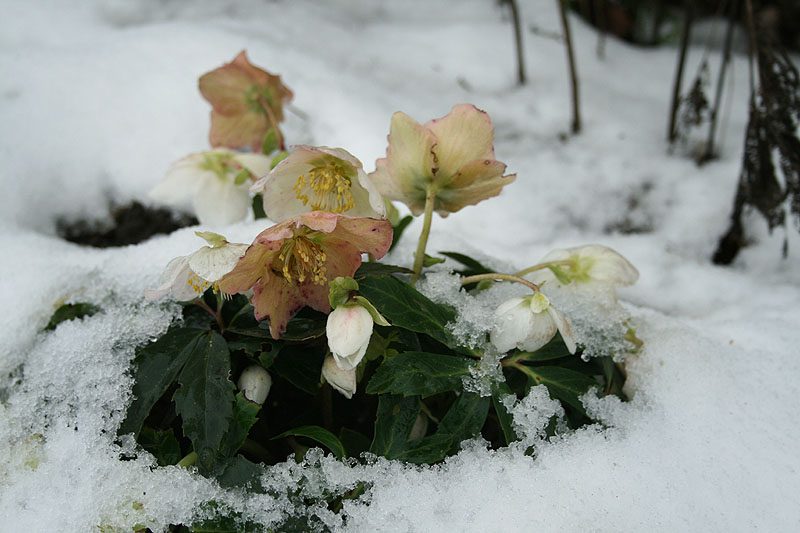Haven’t the mild temperatures and sunny days been marvelous? We hope that you had a chance to get outside and enjoy those beautiful days. And even though, these steps into early spring will be followed by a few that are headed back into late winter, days are noticeably lengthening, and the sky seems a more intense blue. Spring may, or may not, be ages away, but we know that it’s coming. At this most longed-for change of seasons, patience must be our watchword.
Your houseplants are certainly happier with a little sunshine and longer days. You can start fertilizing moderately to encourage new growth. Prune any straggly stems to stimulate branching. You’ll end up with much nicer plants if you give them periodic haircuts.
You’ll want to wait a couple more weeks to do any re-potting that isn’t absolutely necessary. But here are a couple of pointers.
- Choose the correct sized pot. You can go up 2-inches. For instance, a plant can in 6-inch pot can be up-potted into an 8-inch container.
- Make sure that the new pot has adequate drainage holes. If you like the hole-less cache pots, and honestly, who doesn’t, pot your plant in a utility container and remove it from the cache pot to water.
- Use a good quality potting mix. The best potting mixes promote good drainage and don’t contain soil.
This is about the time when fungus gnats make an appearance. We’ve had lots of reports over the last couple of weeks. These tiny flying pests aren’t really damaging your houseplants, but they can stress the roots of tiny seedlings. And they are just plain annoying to have in your house. Attracted to overly moist soil and decaying organic matter, gnats will usually decline if you dry out your plants in between waterings. But it’s really easy to keep soil too moist in the winter when plants just aren’t using the excess water. If the infestation is really unbearable, an application or two of Mosquito Bits to the top of the soil will do the trick. It’s non-toxic and safe for use indoors. Yellow sticky traps will also help reduce the population by physically capturing adult insects before they can reproduce.
If you’ve been storing any dormant tropical plants, it’s time to wake them up. Move them to a spot with high light levels and begin regular watering. Prune back any dead or spindly growth and check for pests. These tropical plants are from warm climates so they appreciate a similar environment. And start thinking about where you will place them when moved outside for the summer. Perhaps they can be incorporated into some annual container groupings on your porch or patio. They make spectacular centerpieces.
And speaking of those containers, consider incorporating some summer-blooming bulbs. Dahlias, begonias and cannas all come in a ton of colors. We have some varieties in the Garden Center now, but more are due in early March. Did you store any from last summer? Time to pot them up. This early start will ensure that they follow earlier. The same basic rules of container growing apply here. Clean pots with good drainage, well-draining potting mix and plenty of light will get your bulbs off to a great start!
I love this time of year as my gardens begin to wake from winter sleep. I spotted a few Hellebore flower buds emerging last weekend. Very exciting. But the old Scout motto applies. Be Prepared! The warm temps will stimulate growth. The more tender the growth, the greater the potential for damage if temperatures dip significantly. This may be our battle this season. So keep a few utility pots and floating row covers on hands to protect new foliage and flower buds from cold temps.
And if you’re able to hold those horses until the end of March, promise yourself that you’ll take advantage of the next nice Saturday or Sunday and tour your yard, or visit one of the area’s many municipal gardens. The paths may be icy, but buds will be emerging soon. See what you can find.

